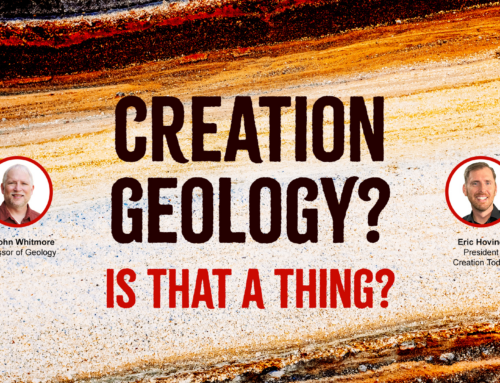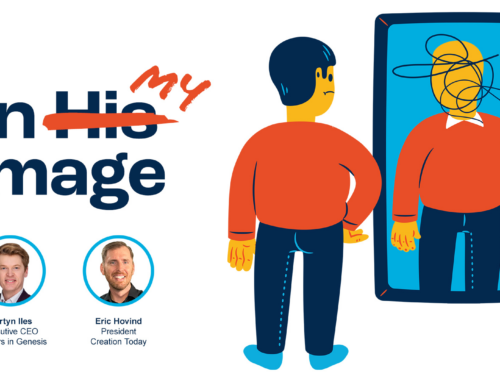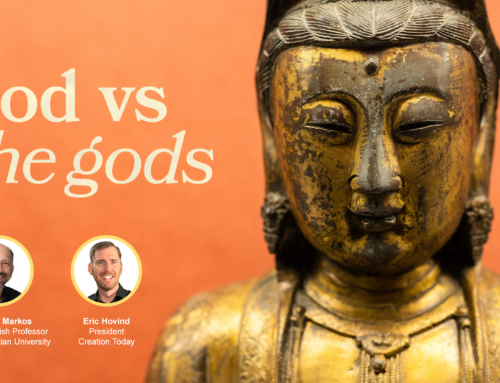The Big Bang theory has been accepted by a majority of scientists today. Therefore, this is worth investigating, right? So let’s take a peek into the science of what these scientists claim.
Who Started the Big Bang Idea?
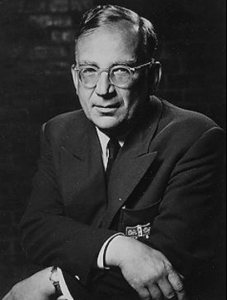
George Gamow
The originators included George Lemaitre, a Belgian, who struck on the basic idea in 1927; and George Gamow, R.A. Alpher, and R. Herman who devised the basic Big Bang model in 1948. But it was Gamow, a well-known scientist and science fiction writer, that gave it its present name and popularized it. 1 Campaigning for the idea enthusiastically, he was able to convince many other scientists of its validity. He used quaint little cartoons to emphasize the details, and the cartoons really helped sell the theory.
What Is the Big Bang Theory?
According to this theory, in the beginning, there was no matter, just nothingness. Then this nothingness condensed by gravity into a single, tiny spot and decided to explode. That explosion produced protons, neutrons, and electrons which flowed outward at incredible speed throughout empty space, for there was no other matter in the universe.
As these protons, neutrons, and electrons hurled themselves outward at supersonic speed, they are said to have formed themselves into typical atomic structures of mutually orbiting hydrogen and helium atoms. Gradually, the outward-racing atoms are said to have begun circling one another, producing gas clouds which then pushed together into stars.
These first stars only contained lighter elements (hydrogen and helium), then all of the stars repeatedly exploded. It took at least two explosions of each star to produce our heavier elements. Gamow described it in scientific terms: “In violation of physical laws, emptiness fled from the vacuum of space and rushed into a super dense core that had a density of 1094 gm/cm<2 and a temperature in excess of 1039 degrees absolute.”
Where did this “superdense core” come from? Gamow solemnly came up with a scientific answer for this, too. He said it came as a result of “the big squeeze” when the emptiness made up its mind to crowd together. Then, with true scientific self-assurance, he named this solid core of nothing, “ylem” (pronounced “ee-lum”). With a name like that, many people thought this must be a great scientific breakthrough. In addition, he added numbers to give the theory an additional scientific flair. This remarkable lack-of-anything was said by Gamow to have a density of 10145 g/cc, or one hundred trillion times the density of water. What happened next?
All that packed-in blankness went boom! That is the theory.
While some hold dearly to it, here are just a few of the scientific reasons why the Big Bang Theory is unscientific, unworkable, and logically unsound.
DENSITY — NOT!
Nothingness cannot pack together. It would have no way to push itself into a pile.
It is said that the nothingness got very dense, and that is why it exploded. But a total vacuum is the opposite of total density. A vacuum has no density. Truly, Big Bang Theorists, that is a lot of density for a gigantic pile of nothingness!
At this maximum radius the density of ordinary matter would have been 10-12 grm/m3, over 1016 times as great as the present mass density. No stars could have formed in such a Universe, for it would not have existed long enough to form stars.”[R.H. Dickey, Gravitation and the Universe (1969), p. 62]
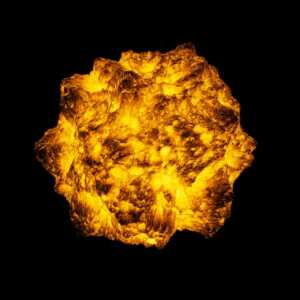
EXPLOSION — NOT!
There would be no ignition to explode nothingness. No fire and no match. It could not be a chemical explosion, for no chemicals existed. It could not be a nuclear explosion, for there were no atoms.
EXPANSION — NOT!
There is no way to expand it. How can you expand what isn’t there? Even if that magical vacuum could somehow be pulled together by gravity, what would then cause the pile of emptiness to push outward? The “gravity” which brought it together would prohibit it from expanding.
One example of this is the expansion of the original fireball from the Big Bang, which they place precisely within the narrowest of limits. An evolutionist astronomer R.H. Dicke says it well: “If the fireball had expanded only 0.1 percent faster, the present rate of expansion would have been 3 x 103 times as great. Had the initial expansion rate been 0.1 percent less, the Universe would have expanded to only 3 x 10, a mere 6% of its present radius before collapsing. [R.H. Dickey, Gravitation and the Universe (1969), p. 62]
HEAT — NOT!
Nothingness cannot produce heat. The intense heat caused by the exploding nothingness is said to have changed the nothingness into protons, neutrons, and electrons. First remember that an empty vacuum in the extreme cold of outer space cannot get hot by itself. Second, an empty void cannot magically change itself into matter. Third, there can be no heat without an energy source.
Big Bang Theorists must believe in miracles for a humongous pile of nothingness to produce heat. This is especially true when we realize that it is impossible for nothing to get hot. Air does get hot, but air is matter, not an absence of it.
CALCULATIONS — NOT!
The Big Bang calculations to produce a “perfect explosion” require too exacting mathematical equations. On many points, the theoretical mathematical calculations needed to turn a Big Bang into stars and our planet cannot be worked out; in others they are too exacting. Knowledgeable scientists call them “too perfect.” Mathematical limitations would have to be met which would be next to impossible to achieve. The limits for success are simply too narrow.
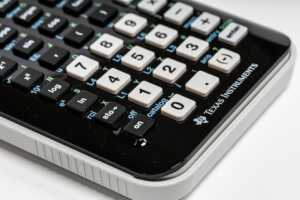
Such an equation would have produced not a universe but a hole. *Roger L. St. Peter in 1974 developed a complicated mathematical equation that showed that the theorized Big Bang could not have exploded outward into hydrogen and helium. In reality, St. Peter says the theoretical explosion (if one could possibly take place) would fall back on itself and make a theoretical black hole! This means that one imaginary object would swallow another one!
Gamow’s theory may look good in math calculations, but it can’t actually happen. A tiny bit of nothing packed so tightly together that it blew up and produced all the matter in the universe? Seriously now, this is a fairy tale. Though theorized on paper, in reality, it is a bunch of armchair calculations, and nothing else.
ANTIMATTER — NOT!
There is not enough antimatter in the universe. This is a big problem for the theorists. The original Big Bang would have produced equal amounts of positive matter (matter) and negative matter (antimatter). Yet only small amounts of antimatter exist. If the Big Bang Theory were true, there should be just as much antimatter as matter. “Since matter and antimatter are equivalent in all respects but that of electromagnetic charge oppositeness, any force [the Big Bang] that would create one should have to create the other, and the universe should be made of equal quantities of each. This is a dilemma. Theory tells us there should be antimatter out there, but observation refuses to back it up.”[Isaac Asimov, Asimov’sNew Guide to Science, p. 343] “We are pretty sure from our observations that the universe today contains matter, but very little if any antimatter.”[Victor Weisskopf, “The Origin of the Universe,” American Scientist, 71, p. 479]
The antimatter from the Big Bang would have destroyed all the regular matter. This fact is well-known to physicists. As soon as the two are produced in the laboratory, they instantly come together and annihilate one another.
Conclusion
The Big Bang theory is based on theoretical extremes that would actually produce a black hole, not a universe. Scientists can and should theorize. However, the fact remains that the Big Bang Theory has never been seen and there is no definitive evidence that it ever happened. Let’s not mistake Disneyland fairytale theories for science.
It all sounds like something you might find in a science fiction novel. And that is all it is. The theory stands in clear violation of physical laws, celestial mechanics, and common sense.
Hmmm . . . Density, Explosion, Expansion, Heat, Calculations, Antimatter: These Big Bang Theory aspects are impossible, and some demand parameters that would require miracles to fulfill. All these provide BIG PROBLEMS for the BIG BANG Theorists who vehemently deny the supernatural but seem to have a lot of faith in miracles!

Further Study
Evolution Handbook by Vance Ferrell Available in “hard copy” or “downloadable PDF”
- Isaac Asimov, Asimov’s New Guide to Science, 1984, p. 43 ↩

